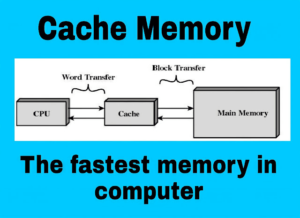
DVD Full Form
DVD full form is Digital Versatile Disc. It can also be called as Digital Video Disc. It is an optical storage medium. The size and shape of a DVD are the same as that of a CD-ROM but the difference lies in the capacity to store the data. A DVD is capable of storing data that is seven times more when compared to that of a CD-ROM. Also, the cost of these will be much higher than the CD-ROM. However, they can store both audio, video, and other forms of data as well. They guarantee high-quality visuals.
Structure of a DVD
The diameter of a DVD is 120 mm and its thickness is 1.2 mm. The data that is stored on the disk can be read by using laser beams. This data is stored in the pits and these pits are present on a spiral track. A single-disc consists of a number of tracks as they are placed very near to each other and these tracks in turn consist of a number of pits. They are separated by a distance of 0.74 microns and this distance is called as the track pitch. The pit length is 0.4 micron.
As mentioned earlier, a DVD consists of a large number of smaller pits and hence it is necessary that the laser beam should produce a small spot on the beam when projected and hence, DVD successfully accomplishes this task by lowering the wavelength of the beam from 780 nm to 635 nm.
Storage Of the Data on DVD
The storage capacity of a DVD is more when compared to that of a CD-ROM. It can take store up to 17 GB (gigabytes) of data. This is 25 times more than what a CD-ROM can store. It is also capable of storing high-quality audio-video content like a full-length movie. This is possible by making use of the MPEG and Dolby compression technologies.
When audio-DVD and audio-CD are compared, Audio-DVD can store 4.7 GB of data. This means that audio DVD, for every second, can store data which is 1100 times more than the data that is stored on audio CD for every second.
The recording time in DVD is also more when compared to CD-ROM. The recording time for a DVD is 200 minutes whereas for a CD-ROM it is 74 minutes. The DVDs and CD’s are almost alike except that the CD formatting on DVD is different than that of the CD. There is a variety of DVD’s that are available in the market.
DVD-ROM
This type of DVD is capable of storing almost all sorts of data. The data can be audio, video, etc. As the name itself suggests that it is a read-only DVD. They do not work when they are combined with DVD video players. The DVD drives are generally installed on PC’s and notebook computers.
DVD-RAM
This type of DVD refers to a big diskette that allows writing again once the contents are erased, hence called a rewritable DVD. It can store up to 4.7GB per side. It is available in both single-sided and double-sided versions. It overcomes the problem that is seen in DVD-ROMs. That is, it works well with other DVD-Video players, DVD-ROMs, and the CD’s.
DVD-R (Recordable)
The read operation in a DVD is similar to that of the CD-ROM. It is done by projecting the laser beam from the read head onto the disc surface. The beam may get reflected back (or) can scatter.
This type of DVD is used for recording purposes. It can store up to 3.95 GB of recordings. The method (or) technology that it uses is the same as that of the technology used by the CD-R. It is the dye-layer technology that it uses.
Write Operation in DVD
A write operation on the DVD is performed by making use of two layers namely the transparent layer and opaque layer. The transparent layer is close to the top and below that is the opaque layer. Both these layers work as the working layers. The laser beam can be incident on any one of the layers and the capacity will be essentially doubled.
DVD-RW(Read/Write)
This type of DVD allows the user to perform both read and write operations. The storage capacity of this type of DVD is the same as that of DVD RAM ie. 4.7 GB. It can be reused more than 1000 times. It does not require any special drive for its working. It can run on a normal DVD-ROM drive itself.
DVD Drives
A DVD drive is the one that can be used for running the DVD. It is capable of reading the contents of both DVD and CD-ROM. Because of this purpose, it rotates the disc much slower. However, the overall output of a DVD is much higher than a CD-ROM because the rate at which it sends the data to the computer is very high.
It is so because the data is stored close to one another in the middle layer rather than in the top layer. The DVD drive always accepts the data, reads them, and converts them into patterns of 0″‘s and 1’s and then sends them to the computer. Later it performs decoding of those data bits in order to display them on the screen.







